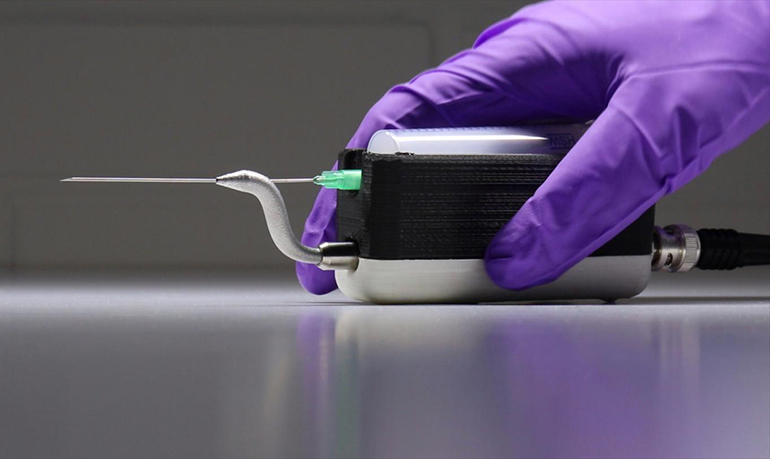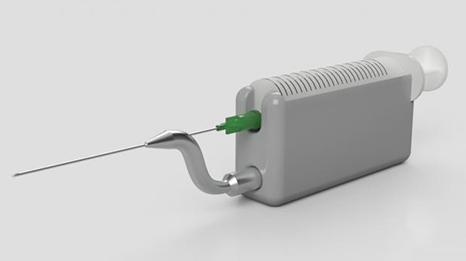
Researchers at Aalto University in Finland have developed an ultrasonically actuated needle that can retrieve a large amount of tissue during a biopsy, without the pain and complications associated with using bigger needles. The technique could be very useful when clinicians need to obtain tissue samples for molecular tumor diagnostics, since obtaining high quality samples is crucial, given the expense of molecular profiling procedures. The technique may also help to reduce patient inconvenience associated with repeat biopsies because of an initial poor tissue sample.
“Biopsy yields – the amount of tissue extracted – are often inadequate, with some studies showing that up to a third of fine-needle biopsies struggle to get enough tissue for a reliable diagnosis,” said Professor Heikki Nieminen, a researcher involved in the study, in an Aalto announcement. “A biopsy can be painful, and the wait for the results from a diagnostic test can be a highly distressing time for the patient and family, especially if diagnosis needs re-biopsies to be conclusive. We wanted to make the procedure more gentle for the patient, and increase the certainty that the test will be able to give us an answer on the first attempt.”
One of the issues with biopsies is the need to use wide bore needles to ensure that enough tissue is obtained for the required diagnostic tests. “They are painful for the patient and can also cause bleeding – you don’t want to use a core needle unless you have to,” said Kenneth Pritzker, another researcher that worked on the new device. “At body temperature, human tissue exists as something that behaves part-way between being a solid and a liquid. The breakthrough here is that by making the needle tip vibrate ultrasonically, we’re able to make the tissue flow more like a liquid, which allows us to extract more of it through a narrow needle.”

The device can house a conventional syringe with a fine needle. It can then vibrate the needle tip approximately 30,000 times per second. The vibrations cause the tissue to behave more like a liquid and so more tissue can enter the fine needle. “The vibrations provide energy to the tissue to make it more fluid-like,” said Emanuele Perra, a third researcher involved in the study. “The vibrations are localized to just the tip, so it doesn’t affect any other tissue except a small region around the needle. We were able to show that the ultrasonic vibrations increase the biopsy yield by 3 to 6 times compared to the same needle without ultrasound, which was even greater than we hoped for.”
Here’s a video demonstrating a comparison between a conventional biopsy needle and an ultrasonic one:
Study in Scientific Reports: Ultrasonic actuation of a fine-needle improves biopsy yield
Via: Aalto University
